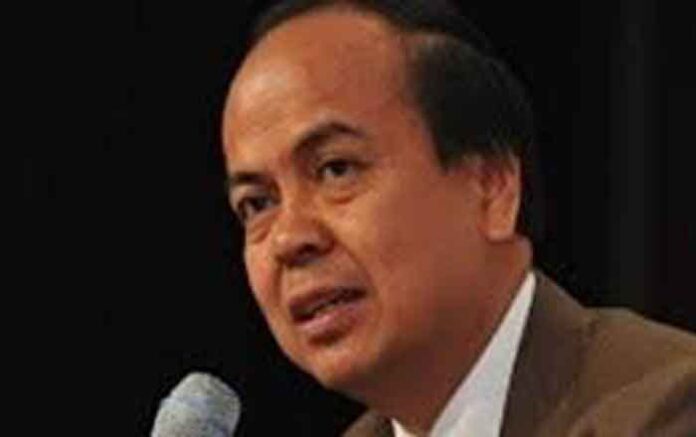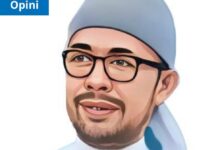By Hafid Abbas
Promoter of Nelson Mandela’s Honorary Doctorate, UNHAS 2005
Jean Bilala – Researcher, University of Cape Town, South Africa
In 1947, during the early days of Indonesia’s independence, President Soekarno implemented a multi-campus management policy, designating the University of Indonesia (UI) as the central administrative and academic hub for several universities across the country. Each campus specialized in a distinct area of excellence: UI in Bandung focused on Engineering, Mathematics, and Natural Sciences; UI in Surabaya specialized in Medicine and Dentistry; and UI in Makassar concentrated on Economics and Law.
This approach helped to standardize the quality of higher education across regions and encouraged harmonious interaction between centers of scientific excellence, enabling synergistic contributions to Indonesia’s economic, social, and cultural advancement.
By 1956, these specialized campuses began to evolve into more autonomous institutions. On September 10, 1956, for example, the UI campus in Makassar officially became Hasanuddin University (UNHAS).
It is, therefore, unsurprising that UNHAS has produced prominent alumni, especially in the fields of economics and law—such as Jusuf Kalla, Tanri Abeng, and Baharuddin Lopa.
After more than seven decades of development, UNHAS is now recognized as a World Class University, ranked 951–1000 globally in the QS World University Rankings 2025, with a notable achievement in the lecturer-to-student ratio, placing 484th in the world (Tribun-Timur, 24/06/2025). Meanwhile, Webometrics (2024) ranked UNHAS 480th in Asia and 11th among more than 4,500 universities in Indonesia.
Given its track record, and with a network of alumni influential at the national, regional, and international levels, particularly in promoting peace and resolving conflicts through concrete action, UNHAS is well-positioned to become one of the leading peace study centers in the world.
This vision is supported by several important factors: First, the Mandela Legacy and Asia-Africa Relations. UNHAS’s credibility in peace studies is strengthened by its historical ties with Nelson Mandela, who received an Honorary Doctorate (Honoris Causa) from UNHAS on September 10, 2005. Mandela, the first Black President of South Africa (1994–1999), is revered as the symbol of the anti-apartheid movement and national reconciliation. The United Nations hails him as the Father of World Peace, and he was awarded the Nobel Peace Prize on October 15, 1993.
UNHAS leveraged Mandela’s global reputation to build strategic cooperation with peace institutions and universities in South Africa, and more broadly across Africa and the Non-Aligned Movement. These ties are further supported by a centuries-old historical and cultural relationship between the Bugis-Makassar people of South Sulawesi and their descendants in Macassar, Western Cape, South Africa.
This connection dates back to June 14, 1694, when Sheikh Yusuf— a Bugis-Macassares origin, a religious leader from Banten who fought against Dutch colonialism—was exiled to Zandvliet, near Cape Town, by the VOC. Accompanied by 49 followers, two wives, and 12 children, Yusuf continued his struggle in exile, working to liberate Black South Africans from racial oppression. His efforts inspired the naming of the area “Macassar.”
Mandela cited Sheikh Yusuf as one of his personal inspirations for four reasons:He fought for oppressed people of a different race and nationality; He fought outside his homeland; He asked for no compensation; and He died during fighting injustice. By contrast, Mandela reflected on his own survival after 27 years of imprisonment, his struggle within his own homeland, with his own people, and he received Noble Peace Prize and other international recognitions. While Yusuf got nothing, a silent selfless legacy (Jakarta Post, 15/09/2013).
With that reasons, in early 2005, Rady Gani (UNHAS Rector), Robert Evans (Mandela’s close friend), and I proposed that UNHAS award Mandela an honorary doctorate. The proposal was approved, and the award ceremony took place on September 10, 2005.
This long-standing historical and socio-cultural connection is a valuable asset for Indonesia, especially UNHAS in establishing a peace studies center aligned with the New Asian-African Strategic Partnership (NAASP), promoting inter-university cooperation for peace and producing future peace leaders from both continents.
Second, Jusuf Kalla: Indonesia’s Father of Peace. Another key strength of UNHAS lies in its distinguished alumnus, Jusuf Kalla (JK), class of 1968—10th and 12th Vice President of the Republic of Indonesia, Chairman of the Indonesian Mosque Council, and Chairman of the Indonesian Red Cross. JK is widely recognized as the Father of Indonesian Peace, with significant contributions to humanitarian and peacebuilding efforts both domestically and globally, particularly within the Islamic world.
Over the past three decades, JK has played a pivotal role in resolving numerous communal conflicts, including:The Poso conflict between Christians and Muslims (1998–2001), resolved through the Malino I Declaration on December 20, 2001; The Ambon conflict (1999–2002), resolved through the Malino II Declaration on February 13, 2002.
These initiatives offer valuable models for resolving similar conflicts worldwide.
For instance: The Poso conflict resulted in 577 deaths, 384 injuries, 7,932 homes destroyed, and 510 public facilities burned (Kompas-30/07/2001); The Ambon conflict claimed 8,000–9,000 lives, displaced 700,000 residents, and destroyed 29,000 homes and places of worship (Kompas-23/01/2024).
Thanks to JK’s leadership, with your generous and sincere initiatives, both regions have experienced lasting peace to this day.
The successful resolution of such conflicts serves as a powerful inspiration and a valuable case study for global peacebuilding. UNHAS has a unique opportunity to continue JK’s legacy by nurturing future peace advocates.
Third, The Aceh Peace Process and the Helsinki MoU. The conflict between the Free Aceh Movement (GAM) and the Indonesian government spanned three decades, claiming over 30,000 lives. On December 26, 2004, Aceh was struck by a catastrophic tsunami, resulting in over 200,000 deaths, more than 500,000 displaced persons, and economic losses of approximately USD 7 billion (UN, 2005).
Under JK’s leadership—alongside Hamid Awaluddin and Farid Husein (both UNHAS alumni)—GAM agreed to engage in peaceful dialogue with the Indonesian government. The talks were facilitated in Helsinki by President Martti Ahtisaari and JuhaChristensen. After lengthy negotiations, the Helsinki MoU was signed on August 15, 2005.
The peace agreement brought an end to the violence. If 30 years of conflict caused 30,000 deaths (roughly 2–3 per day), then over the past 20 years (2005–2025), the MoU has saved an estimated 14,600 to 21,900 lives (Amnesty International, 15/08/2013). Economic losses of USD 330 million annually and high poverty rates have also been reversed. Aceh’s economic growth now averages 5.6% per year, with poverty rates continuing to decline (BPS, 2024).
It is worth noting that UNHAS alumni and faculty played dominant roles throughout this peace process. Even Juha Christensen once taught at UNHAS for many years during Achmad Amiruddin’s rectorship (1973–1982).
Finally, UNHAS has not only produced scholars—it has produced peace. Through the quiet strength of Sheikh Yusuf, the resolute leadership of Nelson Mandela, and the courageous diplomacy of Jusuf Kalla, it has carved a place in the global conscience.
Its alumni have faced hatred with dialogue, war with reconciliation, and despair with action. This is more than institutional pride—this is a call to build on that legacy. UNHAS stands uniquely positioned to become a global center for peace studies. A place where the next generation of peacebuilders will learn not only how to negotiate treaties—but how to lead with heart, humility, and humanity.
Let this legacy not fade. Let it be passed on—silently, selflessly, and powerfully—from generation to generation.
















